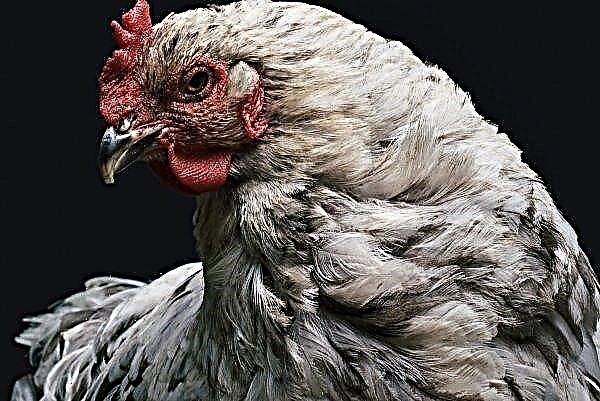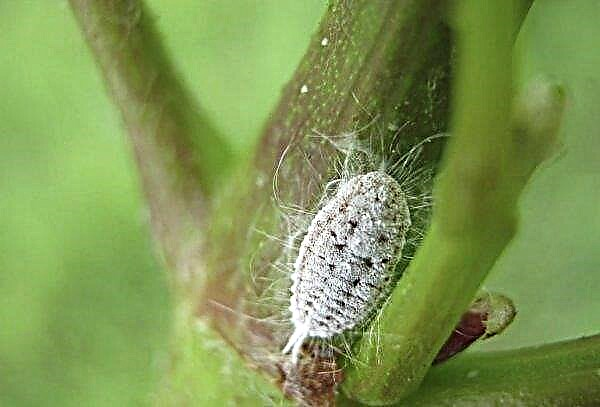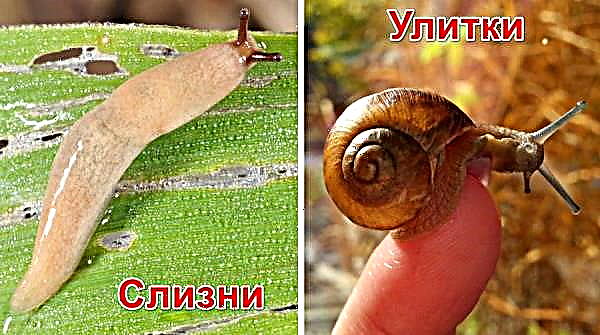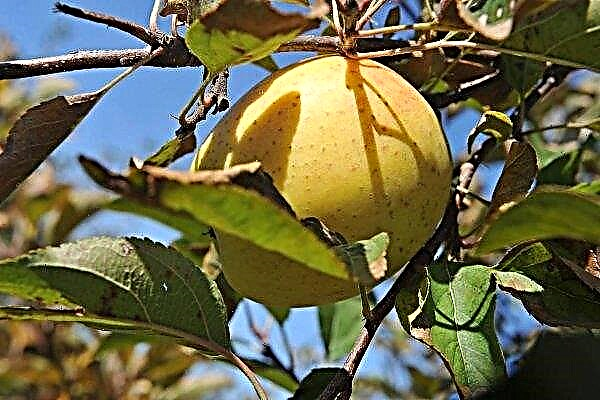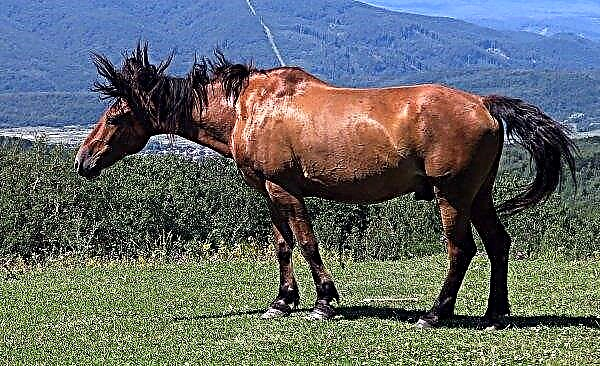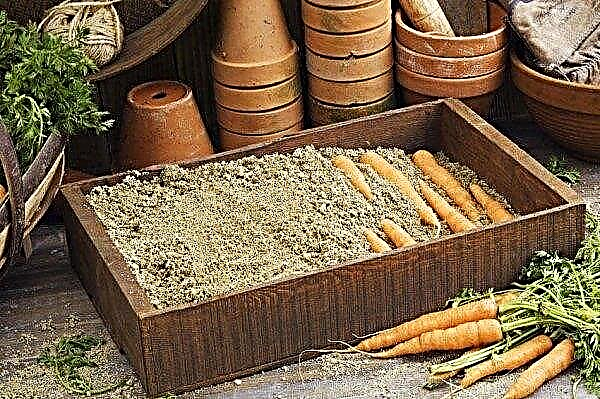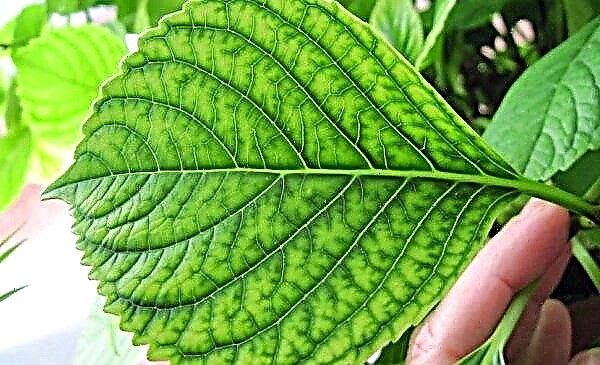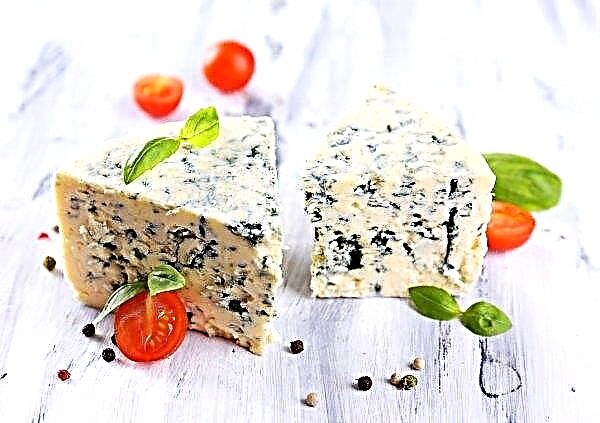The violet room "Jan" owes its appearance to the famous Russian breeder Natalya Puminova. This species has flowers of unusual color, shape and size. The article will focus on the cultivation of this variety and the conditions of its maintenance.
Botanical description of the plant
Indoor violet (the second name of Saintpaulia) is a herbaceous plant with a fibrous superficially underdeveloped root system. Variety "Yang" is represented by many varieties. They are united by a compact leaf rosette from 15 to 40 cm in diameter and large inflorescences of 5-7 cm in diameter. Sheet plates, depending on the variety, may be glossy or pubescent.
The color of the leaves varies from pale green to dark green, mottled specks of yellow or white, as well as a border along the edge of the sheet, are possible. The shape of the leaves is round, sometimes with a pointed tip, in most cases with a serrated edge. Inflorescences can be terry and semi-double, a basket or in the shape of a star.
The color of the petals is varied:
- creamy white;
- pink;
- peach;
- salmon;
- fuchsia;
- blue;
- lilac;
- Violet.
Did you know? The first violet with double terry inflorescence of pink color “Double Pink Cloud” was presented at the flower exhibition “AVSA” in 1954. Instance was sold for $1000.
In many varieties, the petals have a edging along the edge or interspersed with a more saturated shade than the main background. Senpolia Yang bloom twice a year, flowering time is 2–4 weeks, in some varieties up to 6 weeks. The interval between flowering is about 2–4 months, so the dormancy period in plants is relative and does not require special attention. Fading, the violet forms a fruit - a seed box round or in the form of a spindle. Small seeds fall out of the box, which, when ripe, is destroyed by moisture.
Varieties
The variety has many varieties, differing in the structure of inflorescences and color.
The most popular of them:
- violet "Jan Fairy Tale" - A fast-growing variety with serrated leaves in the shape of a boat. Variegated leaf blades with white blotches. Inflorescences are large in the form of stars, terry petals, the main color is white-green. In the center of the cup, the petals shine with a pink tint;

- "Caprice" - a slowly growing plant, blooms 1.5–3 years after planting. A leaf rosette with a diameter of 18–25 cm is formed by smooth leaves with a carved wavy edge. The color of the middle of the leaf is dark green, the border along the edge of white. It blooms large, up to 5 cm in diameter, with double inflorescences. Snow-white petals along the wavy edge are painted green, less often a bronze hue;
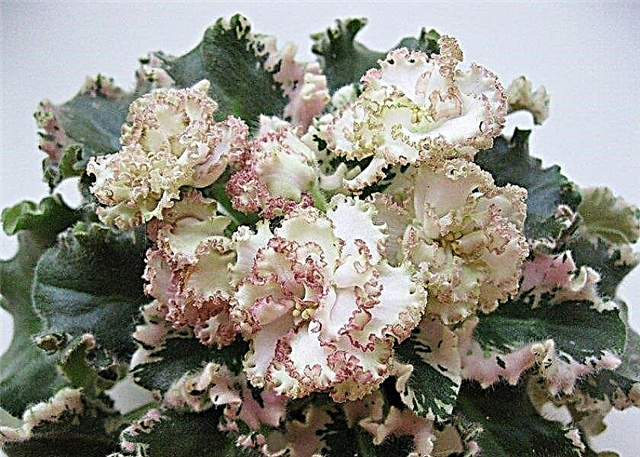
- "Sherkhan" - A compact socket with pubescent green leaves, with a white edging. Inflorescences stars with wavy petals on the edge have a rich fuchsia color. Terry petals appear during the second flowering period;
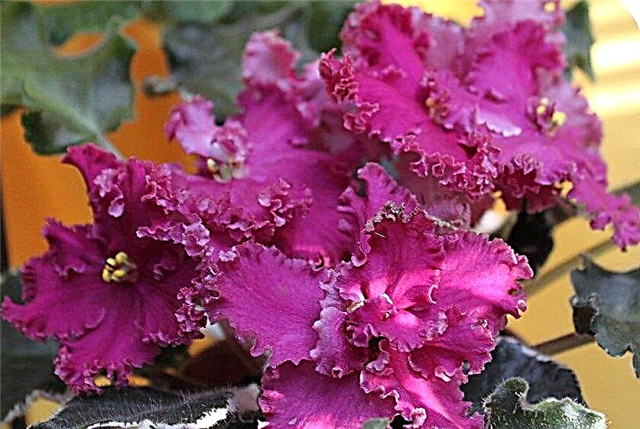
- "Frost" - A neat rosette with dark green leaves, on which a white edging runs along the edge. Inflorescences in the shape of a star, up to 7 buds on a bush, 5–7 cm in diameter. Terry carved petals of a snow-white color;
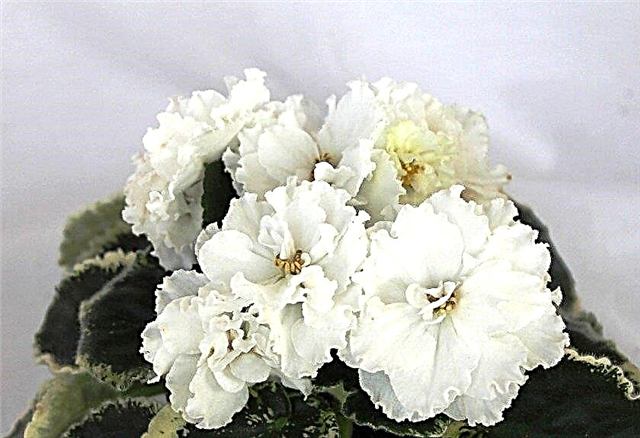
- Katyusha - the bush, growing, forms a rosette with leaf plates slightly raised upwards up to 20 cm in size. The leaves are bright green with a yellowish blotch that may disappear as it grows. Toothed edge plates. Terry or semi-double flowers 1-3 in one peduncle of a pink hue, about 5 cm in diameter;

- "Sahara" - pubescent leaves, rounded in shape with a carved edge, painted green with yellow spots. Large, up to 5 cm in diameter terry inflorescences, the color varies from salmon to bright pink;
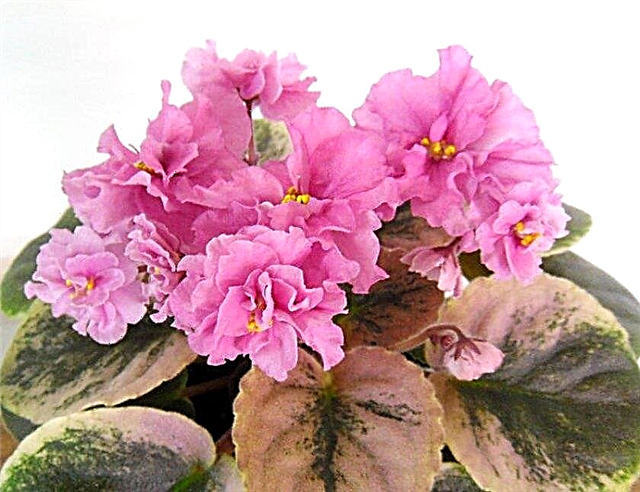
- "Pasha" - leaves are round in shape with clear veins, bright green in color. It blooms frequently and abundantly with large up to 6 cm in diameter terry inflorescences. Terry petals of pale blue or pale pink, a distinctive feature is purple speckles on the main background;

- "Fun" - a loose rosette of light green leaves, up to 40 cm in diameter. When flowering, it is covered with a hat of semi-double inflorescences in the shape of stars. Saturated lilac or pink petals along the edge are framed by a rim of a darker shade;

- Madame - large dark green rounded leaves are pointed at the tip. The inflorescences are semi-double, multi-petalled, painted in pink tones.

Conditions for successful growing at home
In general, the microclimate for the senpolia of the Yang variety is the same for all varieties, with some exceptions.
Accommodation
Most varieties of the Yang variety like diffused light; under too bright light, variegation may not occur. In direct sunlight, the leaves dry and curl.
An exception to the rule are grades:
- Katyusha
- “Frost”;
- "Fun".
These violets show their varietal characteristics in more saturated lighting. Flowers for a couple of hours a day should be placed under sunlight. In winter, plants need backlighting up to 10-12 hours a day. It is best to use fluorescent lamps. The best location would be southeast or southwest window sills. Instances that prefer dim lighting should preferably be stored on shelves near a window.
Did you know? The Soviet Latvian writer Anna Sakse, who wrote many children's fairy tales, in particular, “Tales of Flowers”, believed that violets are capable of making sounds. Only a sincere person with a pure soul can hear them.
Temperature and humidity
The temperature of the senpolia “Jan” is + 20 ... + 25 ° С. Exceeding the temperature threatens to reduce the flowering time. Also, the border or variegation of the plates may not appear. For the Morozko variety, exceeding the value of +24 ° C is critical, and the Skazka variety likes coolness - + 18 ... + 21 ° C. All varieties of the variety need 50-60% moist air. To maintain the required values, use household humidifiers. In the heat, the flowerpot can be placed on a pallet with a moist filler, while the bottom of the pot should not be allowed to come in contact with moisture. In winter, the air is humidified with the help of towels dipped in water, placed on radiators.
Home Care
Leaving procedures are standard, but Yang violet will not forgive errors. Any deviations can slow down growth and delay the flowering period.
Watering
Watering plants is carried out 1-2 times a week, while aging, to prevent overmoistening of the soil or dryness. It is recommended to water with a temperature which corresponds to the air temperature in the room. The ideal option is melt or rain water, otherwise it should be defended. For watering the Saint Yang senpolia, the wick watering method is most often used.
Important! In winter, it is recommended to wrap the vessel with water with a warm cloth so that the water does not cool. Hypothermia is fraught with diseases of the root system.
Here you need to take into account the diameter of the wick:
- for small pots with young specimens, the cord is no more than 2-3 mm;
- for large containers and adult plants - 5-6 mm.

Top dressing
Plants need top dressing no more than 2 times a month. In the period of active growth of green mass, compounds with a large amount of nitrogen are needed. To form flower buds and lush flowering, potassium-phosphorus preparations are used. It is preferable to use mineral compounds for senpolia, in which all elements are balanced. Organics are not desirable for the variety because it contains a large amount of nitrogen.
Important! Plants can not be sprayed: the villi on the leaves and stems retain moisture, which leads to decay.
The following complexes are considered the best for fertilizer:
- "Etisso";
- Bona Forte;
- "Master" with the marking 18.18.18 + 3.
Pruning
Pruning plants of this variety is not a mandatory procedure, since the varieties themselves perfectly form compact bushes. The leaves of the lower row, which lay on the soil, or accidentally broken off, are removed. In adult plants, the lower row is removed to stimulate flowering, but without good reason, the Yang violet should not be cut.
Transfer
Every year in early spring, the soil in the pots needs to be replaced with a fresh composition. The soil should be loose, for which vermiculite is added to the composition of 10% of the total volume.
The mixture is prepared from the following ingredients (in a ratio of 5: 3: 1):
- sheet earth;
- peat;
- coarse sand.
Transplant Technology:
- The day before the procedure, the soil in the pot is moistened.
- The bush is carefully thrown out of the tank, shaken off from the soil coma.
- Inspect the root system, removing, if necessary, rotten or broken roots.
- Slices are treated with powdered charcoal and left to dry for a couple of hours.
- The plant is placed on a hill of soil and gently covered with earth along the edge of the pot.
- Watering is best done the next day.
Video: violet transplant
All varieties of the Jan variety are distinguished by bright and large inflorescences, many have decorative variegated foliage. In order to ensure normal development of plants and long flowering, it is necessary to ensure proper care for it, take into account the varietal characteristics of individual specimens.












